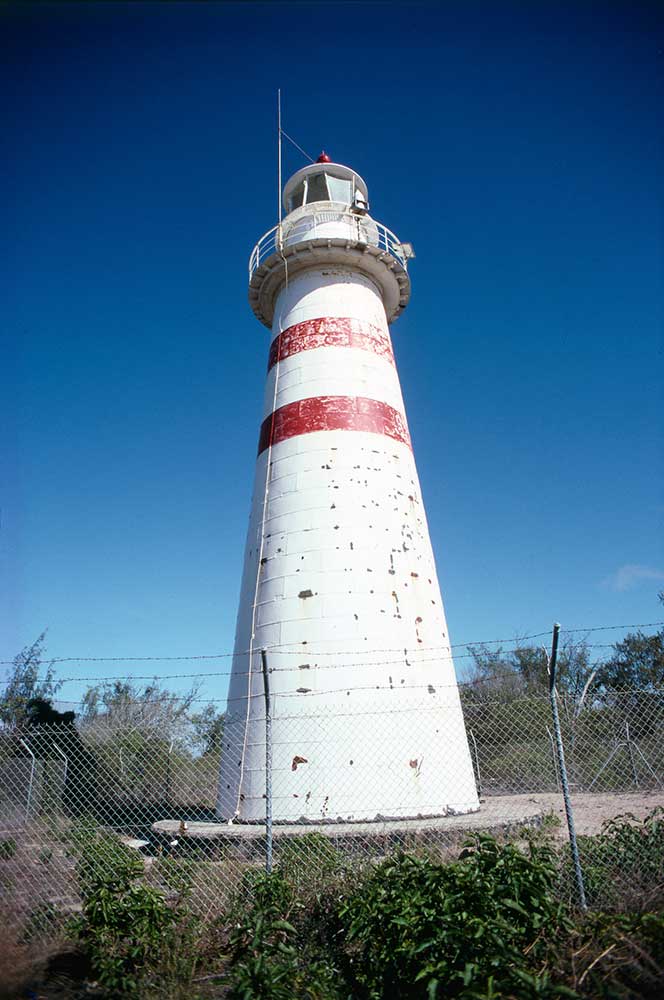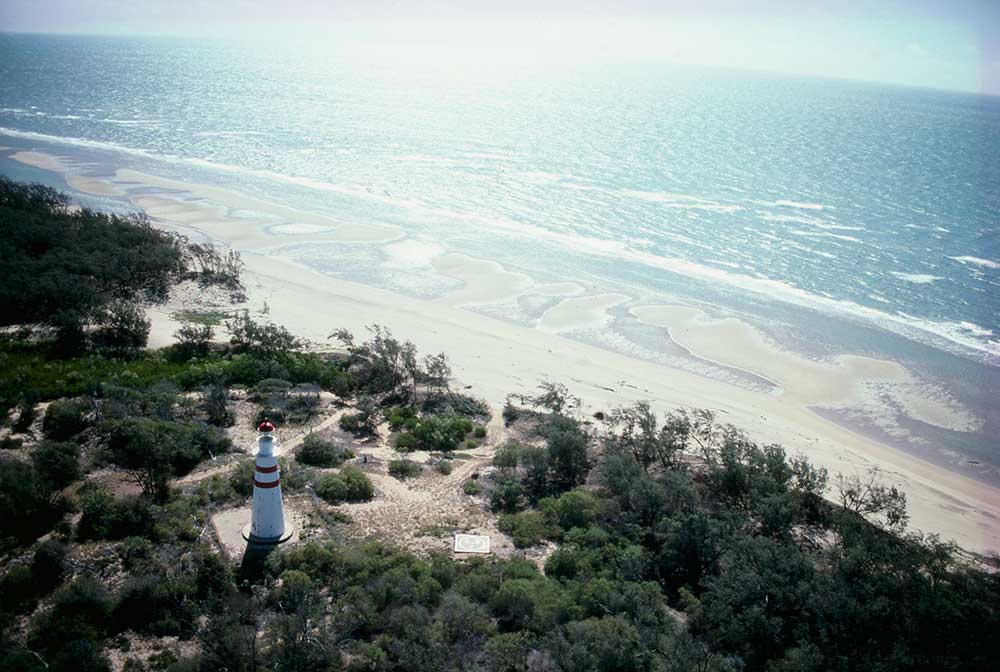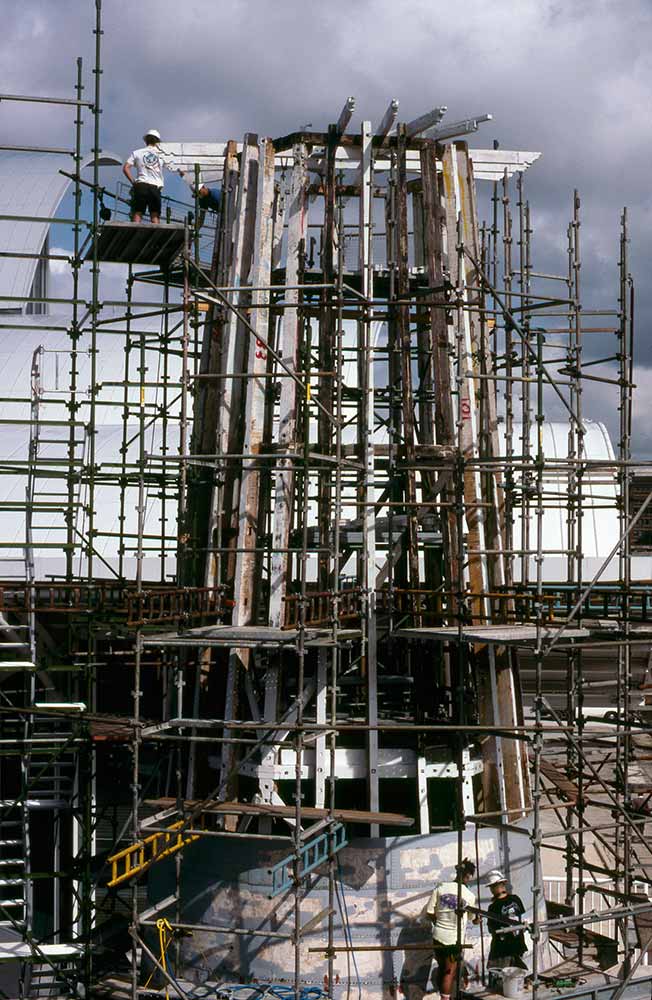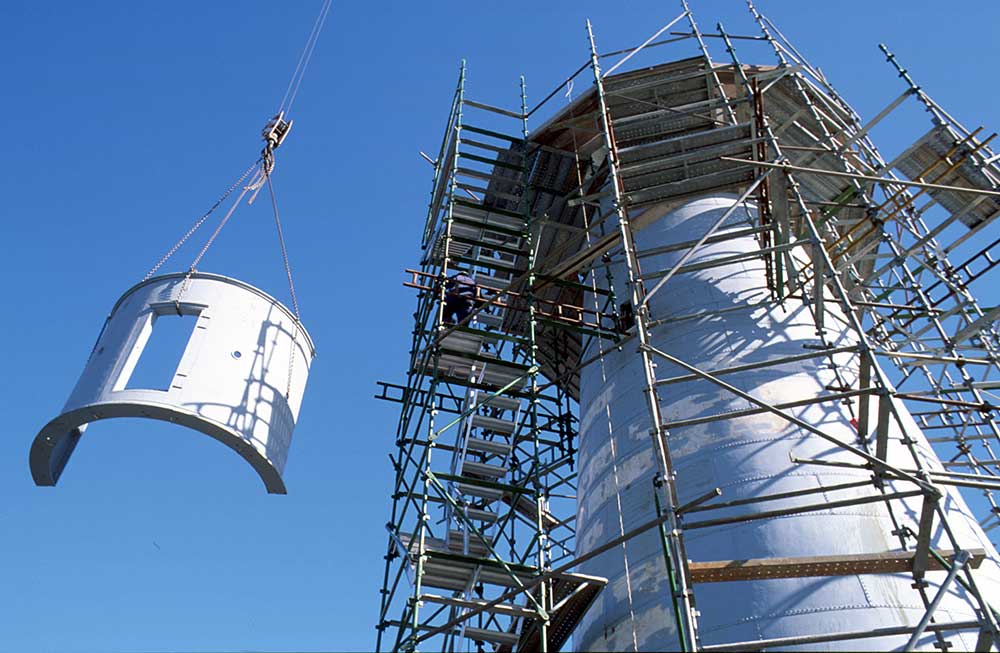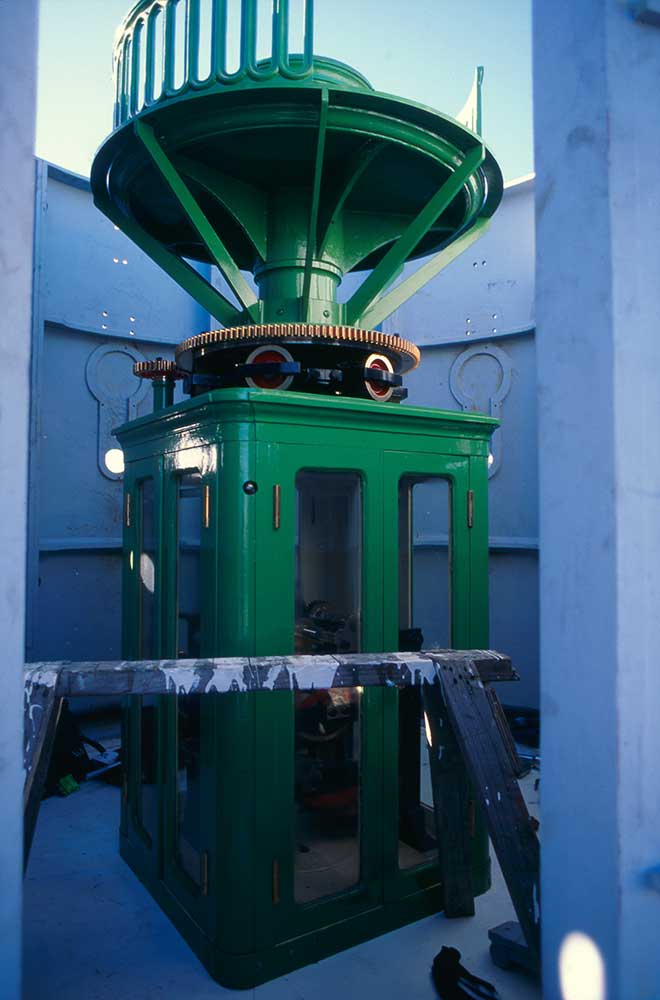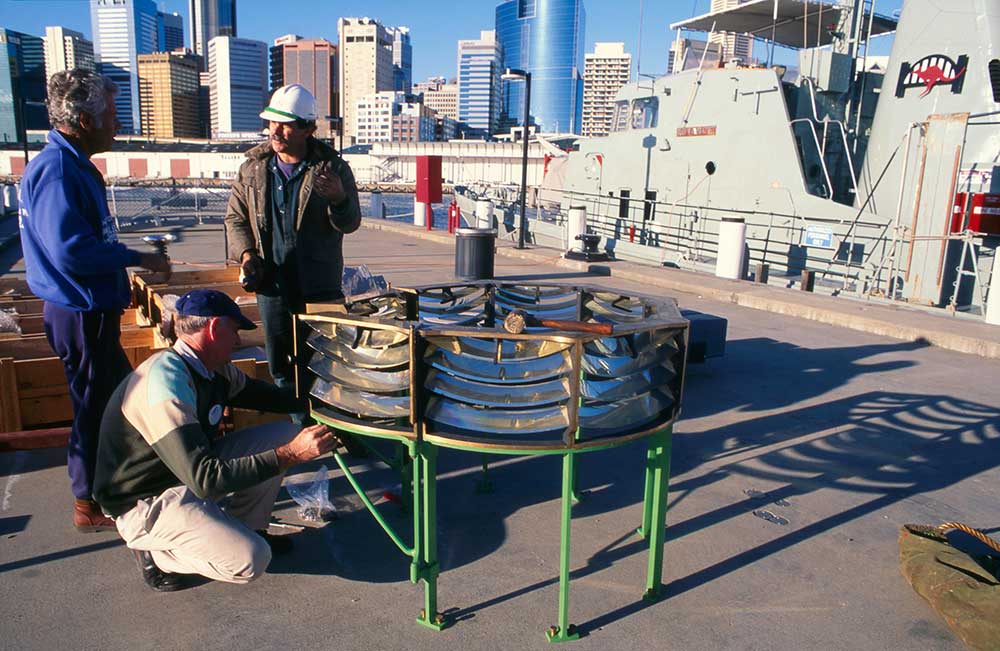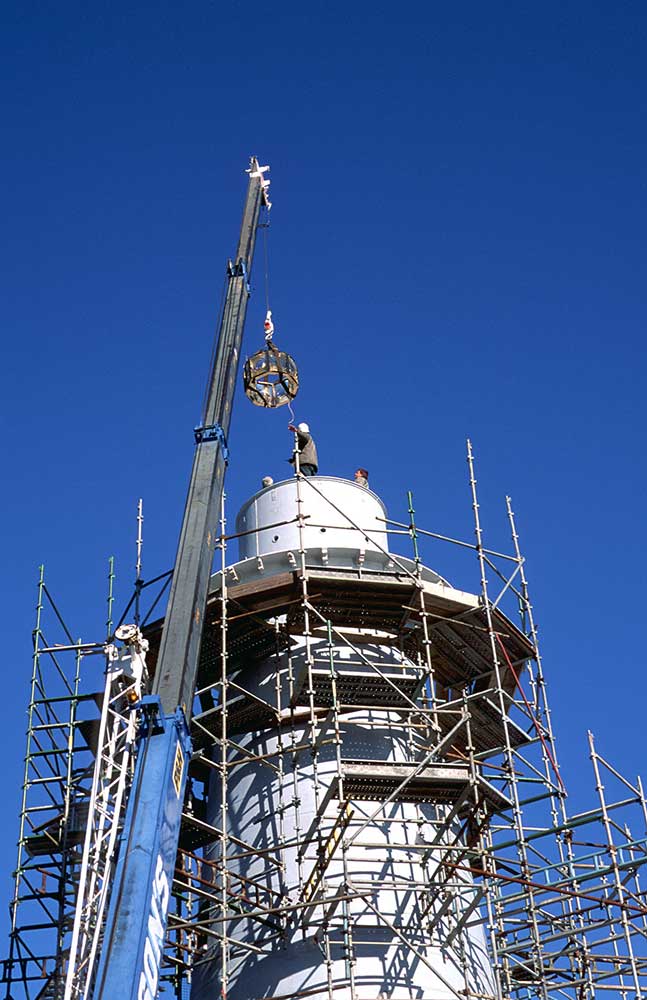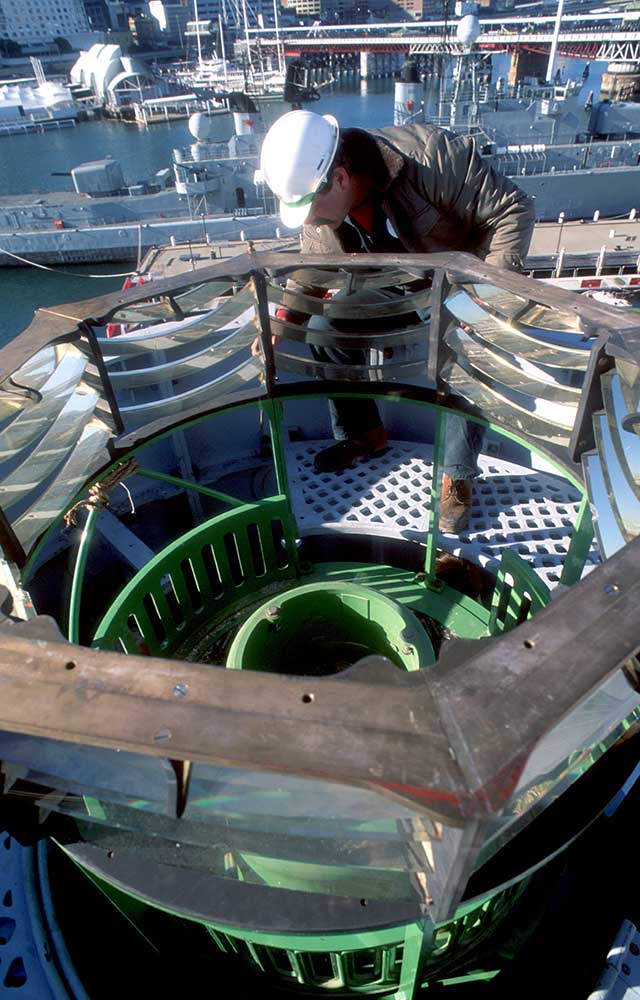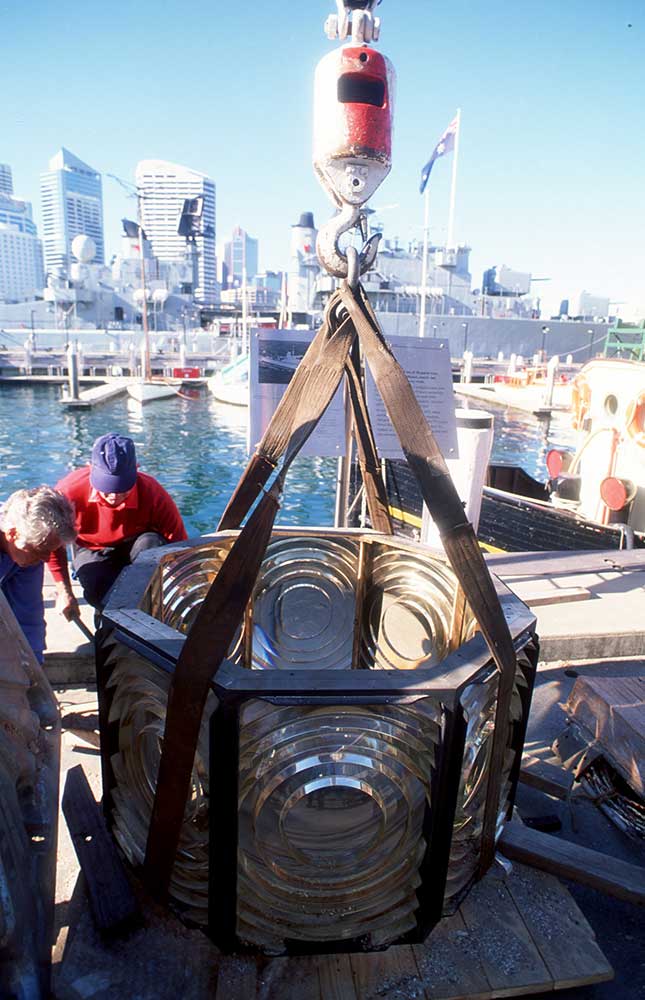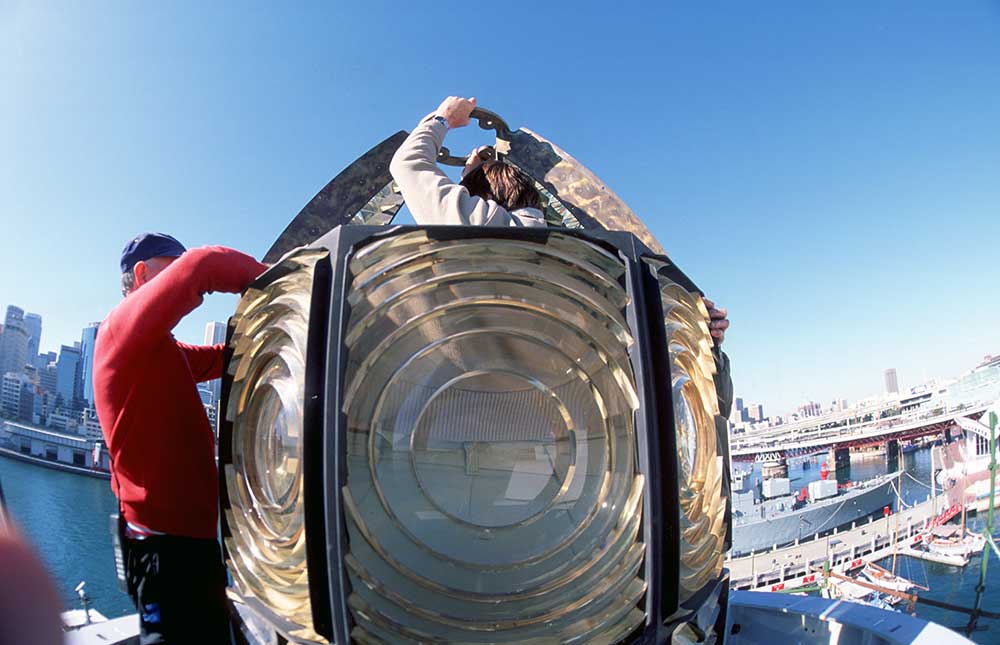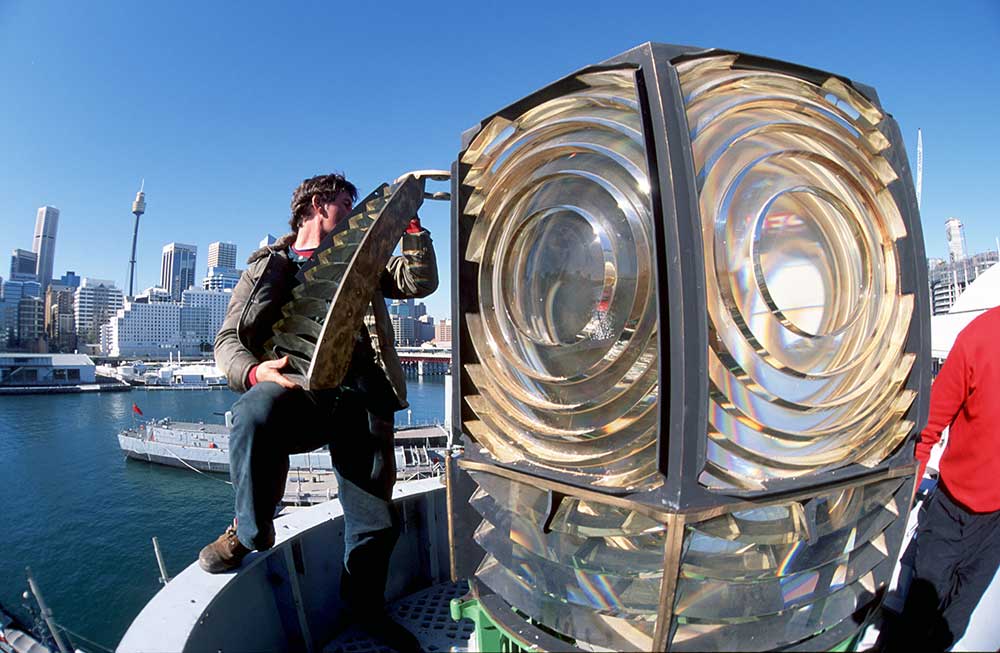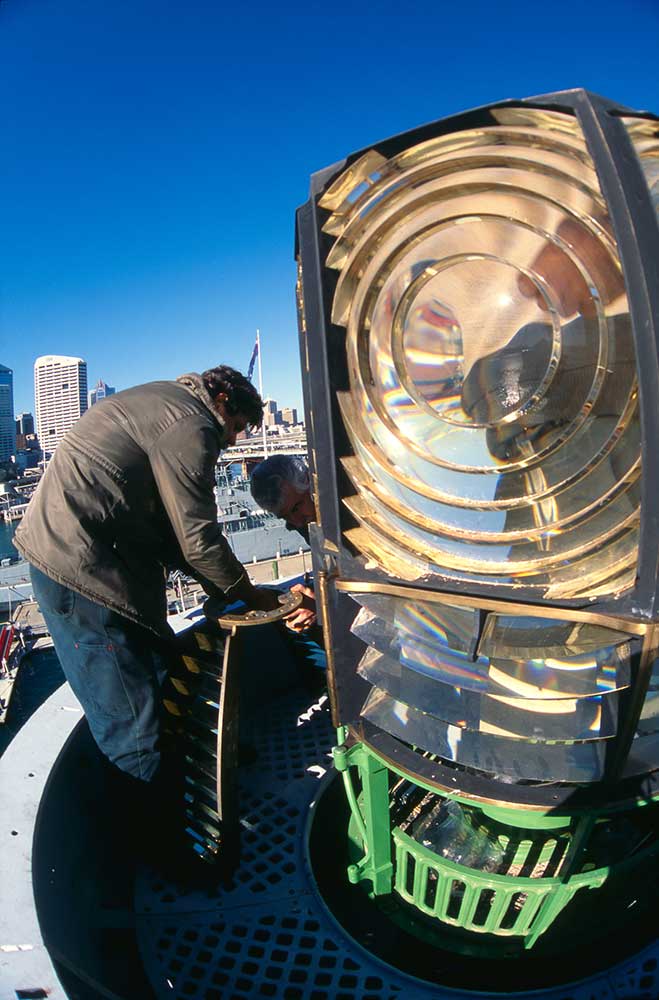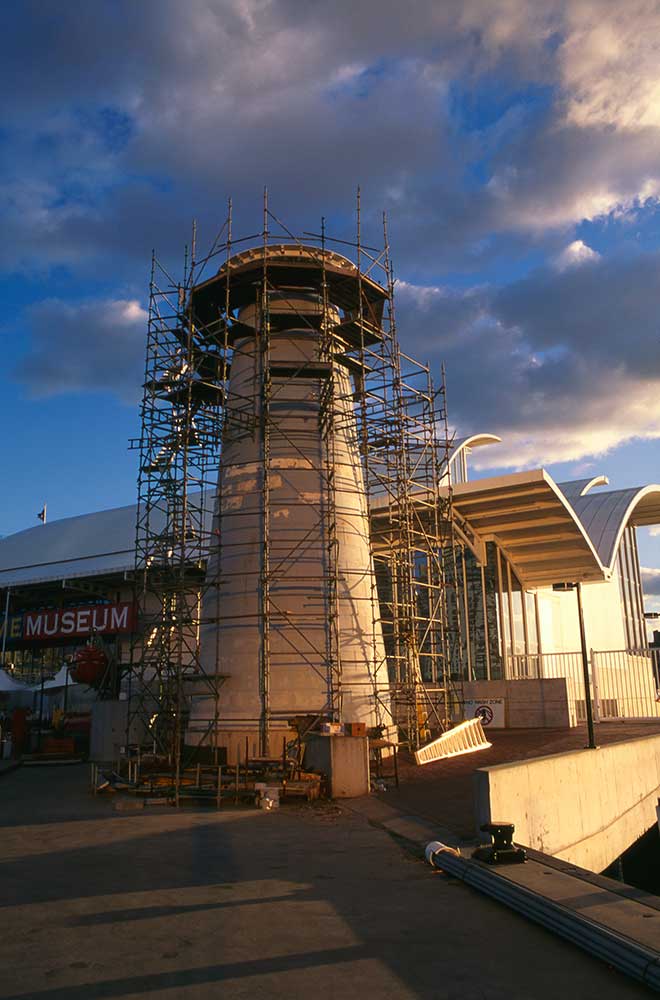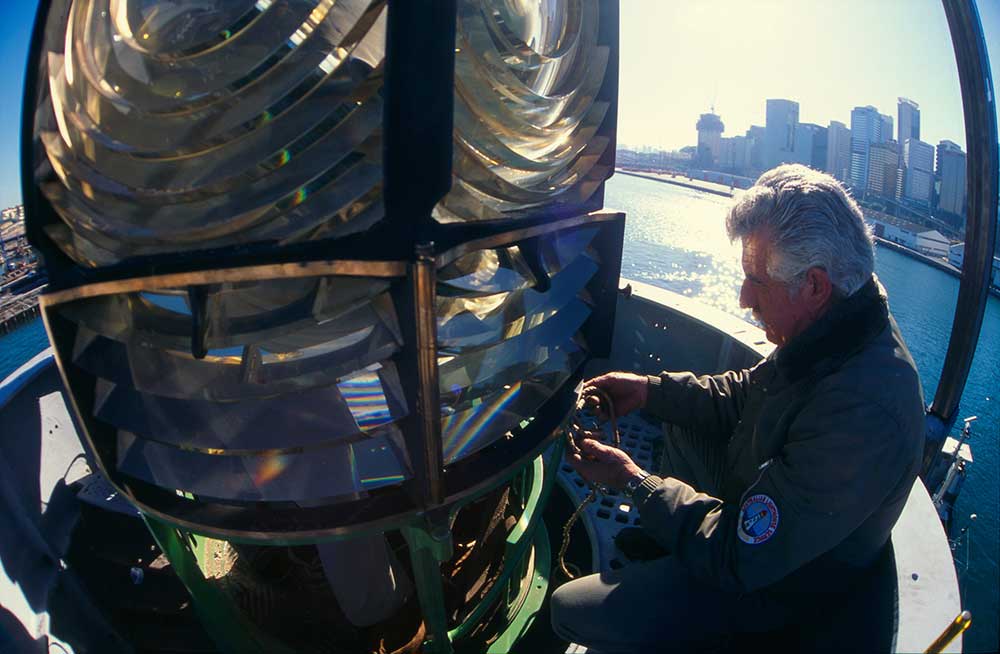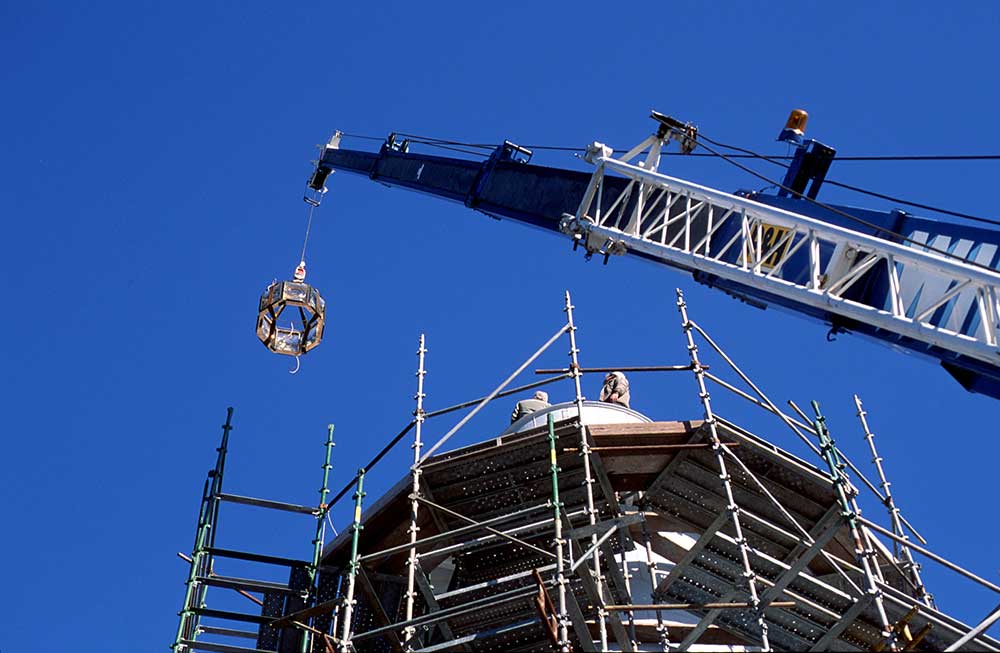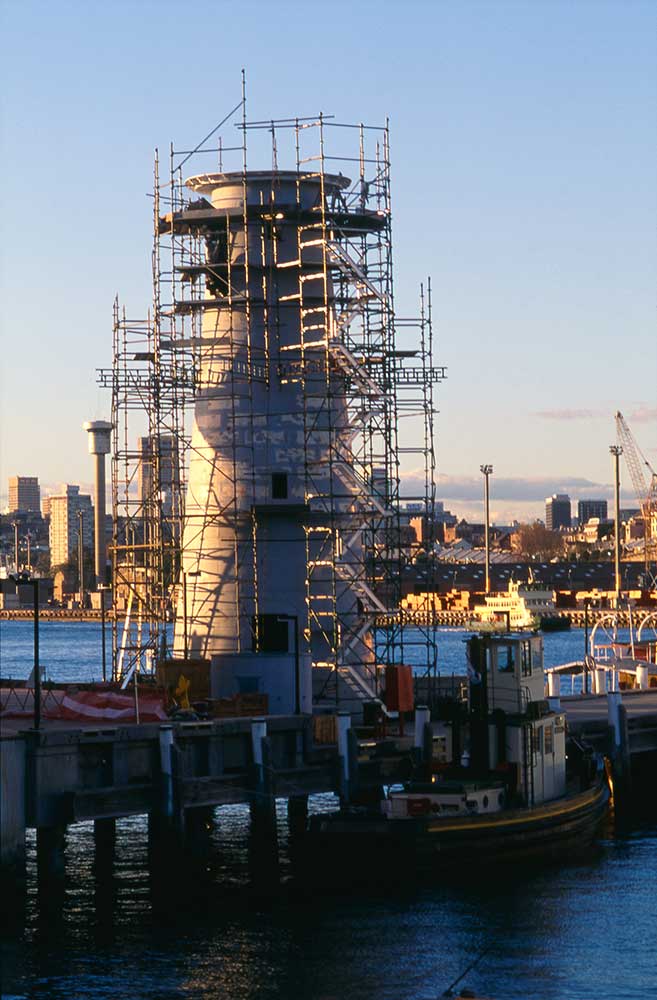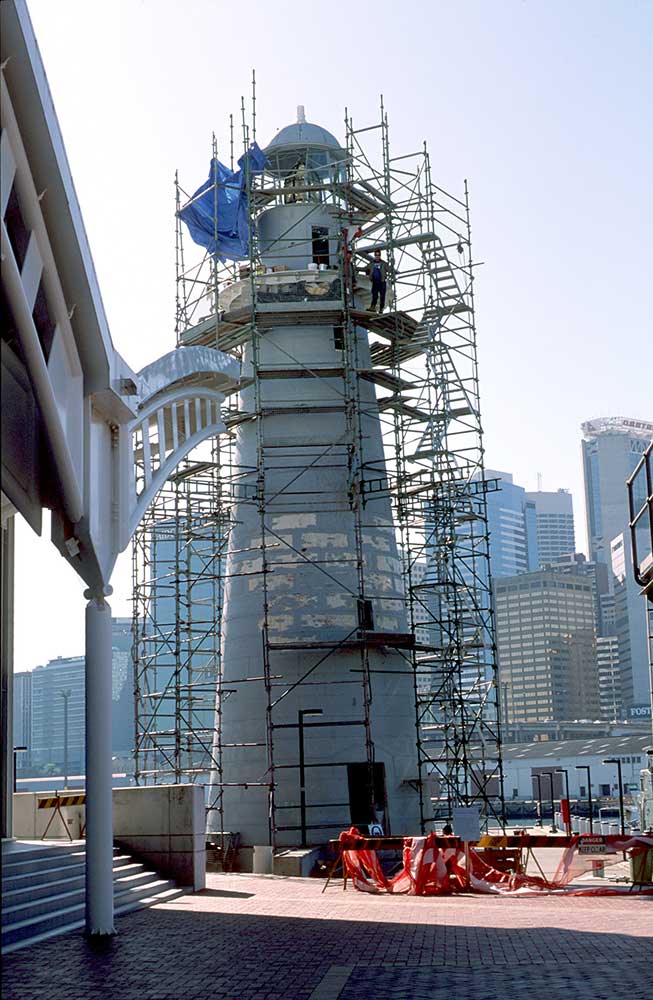Did you know The Australian National Maritime Museum has its own lighthouse?
The Cape Bowling Green Lighthouse has recently undergone a refurbishment, and is now open for visitors to explore its inner working and climb to the top for views of Darling Harbour.
Far from its original location at Cape Bowling Green, a low sandy spit 70 kilometres south of Townsville in northern Queensland, where many ships had run aground. The lighthouse was built using local hardwood for the frame and clad with iron plates imported from Britain. It was prefabricated in Brisbane under the direction of the colonial architect, and constructed by brothers John and Jacob Rooney of Maryborough. Chance Brothers (suppliers to the lightships) supplied the original third-order dioptric rotating light and the fuel system which operated on kerosene. A clockwork mechanism rotated the light, which then had a range of 14 nautical miles.
The lighthouse was staffed by a keeper and three assistants, who lived in four cottages on the site, which was twice threatened by the sea. After only four years of operation the whole light station was moved due to beach erosion, then again in 1908 the tower was re-erected further away as the coastline changed. Gradual improvements were made to the light and mechanisms, and in 1920 it became automatic, so the staff were removed and their cottages demolished. Twin red stripes were painted around the tower to assist daytime visibility from the sea, but by 1987 the lighthouse had been replaced by a modern tower.


